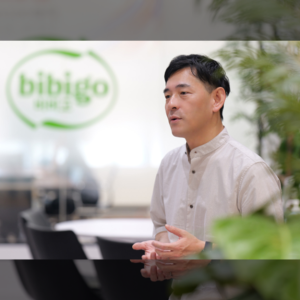
ESG has been at the center of discussion among Korean and global companies. This particular management style that emphasizes the environment, social, and governance (ESG) has become so important to the point that it could even determine the longevity and success of a company. Accordingly, companies in Korea are taking quick measures to strengthen their ESG management. CJ CheilJedang has also expressed its intention for the strategic and systematic implementation of ESG by establishing a Sustainability Committee in April. To learn more about CJ CheilJedang’s Sustainability Committee and ESG management, we recently caught up with the Sustainability Team Manager Min-ah Jang.
What is ESG?
Q. ESG is drawing an incredible amount of attention. However, it seems that very few people know what ESG really is. What exactly is ESG, and how is it different from the conventional CSR activities?
ESG is a key element of management for the sustainable ‘growth’ of a company, and it began to emerge from the capital market including investors. In terms of assessing a firm’s sustainability, there are a number of financial and non-financial indicators that may be used. Among the non-financial indicators, ESG (environment/social/governance) really stands out as being a key element.
Unlike CSR, which is performed voluntarily by companies like a good deed or social contribution regardless of business profits, ESG serves as a management factor for a company’s actual mid- and long-term ‘opportunities’ and ‘crises’. So, while the two clearly share some similarities, they do in fact come from different perspectives.
Q. CJ CheilJedang established the Sustainability Committee on April 13th. This seems like the start of full-scale ESG management. How long have you been preparing for this?
We started discussing this earlier this year, but the preparations have been going on for much longer. As the company has been publishing its sustainability report since 2013, we have been aware of the importance of ESG. We’re acknowledged by many institutions with public confidence in sustainability by being included in the DJSI (Dow Jones Sustainability Indices) Asia-Pacific Index for 6 years in a row, which is a first in the Korean food industry.
Recently, the scope of ESG has been expanding to become something more of a global movement. For example, climate change response is usually announced as an agenda and is legalized mostly in advanced countries. The demand for ESG is growing among various investment firms, clients, and rating agencies. In these circumstances, it became necessary to introduce the highest decision-making body to meet the domestic and global needs for sustainability, reduce investment and rating risks, and secure business competitiveness. Thus, we established the Sustainability Committee to engage in the deliberation and resolution of ESG issues and the Sustainability Council for internal decision making regarding key issues.
Q. There is also the Sustainability Team which was established this year to support the Sustainability Committee and Sustainability Council. What role does it play?
The Sustainability Team preempts ESG risks related to business and provides support for internalization. ESG issues keep changing and developing, so this team is in charge of providing, such as discovering and discussing relevant issues with the implementing organization and introducing new agendas to the Sustainability Council and Committee. It is also in charge of communicating with stakeholders by publishing sustainability reports and sharing the company’s ESG performance and plans.
Establishment of the Sustainability Committee
Q. Through what process are the agendas for ESG management resolved?
In Sustainability Governance, there is the ‘Sustainability Committee’, which is the highest decision-making body, the ‘Sustainability Council’, which is a consultative body, the Sustainability Team, which is an exclusive organization, and other relevant departments. First, issues are discovered by the relevant departments, which are discussed with the Sustainability Team, after which they are then sent to the Sustainability Committee through the Sustainability Council in a bottom-up method. Major issues, on the other hand, are handled in a top-down method from the Sustainability Committee through to the relevant departments.
Q. What tasks will you perform through this process?
We will adopt green energy, achieve carbon neutrality, develop resource recycling and biodegradation technology, such as packaging materials, pursue human rights management, create an organizational culture considering diversity, develop products to promote health and nutrition for the customers, build a sustainable supply chain, and establish a proactive legal/ethical risk management system (compliance management system, etc.).
In particular, we will set human rights and climate change response as the top priority tasks considering their urgency, establish strategies and modify an implementation system within the year. We will also establish strategic tasks by next year for implementation.

Q CJ Selecta’s declaration of being ‘deforestation-free’ to minimize damage to the Amazon rainforests in April might also be an ESG strategy in response to climate change.
That’s right. The Amazon rainforests, which are considered the lungs of the planet, generate about 20% of the world’s oxygen. Forests have however been experiencing rapid devastation since 2019, and also in August 2019, tropical rainforests were damaged by fire caused by indiscreet exploitation.
To take responsibility for the environmental issues caused in the process of extracting raw materials and prevent the destruction of the ecosystem due to indiscreet deforestation or burning in the Amazon rainforests, we declared in January 2021 that we will not be purchasing soybeans that are produced in the Amazon and are currently coming up with specific implementation plans.
Q. What are the plans for the social and governance criteria?
The major keyword for the social criteria is ‘human rights’. 125 million children are still being exploited for child labor worldwide. Also, laborers are still working in poor conditions in some countries without access to basic human rights. As such, we plan to eradicate child labor in the manufacturing process and prevent risks to human rights in all directions. We will also make more efforts such as declaring the ‘CJ CheilJedang Declaration of Human Rights’ to protect the rights of not only our members but also our partners and the communities.
We will also strengthen our governance criteria. The ratio of female executives at CJ CheilJedang is 21.8%, which is much higher than that listed at other companies in Korea (4.6%) (as of the end of 2020). Beyond just increasing female employment, though we’re also operating female leadership programs and nurturing female managers so that women can fully display their competencies and grow into exceptionally talented team members. Appointing female executive directors with expertise in bio business is an outcome of the female leadership programs. We will establish a creative and flexible organizational culture by promoting diversity and inclusion for sustainability.
Steps Needed to Strengthen ESG Management

Q. The first meeting of the Sustainability Committee was held last week. How was the mood, and what were the key issues?
We introduced and received approval for the direction of ESG management overall in addition to this year’s plan. The items approved included a policy related to human rights management. I was impressed by how interested the participants were toward ESG. This proved once again what a critical topic ESG is today.
Q. Too much interest might actually be a burden for hands-on workers. What can be a driving force that helps you overcome this burden and do a good job in ESG?
I think my 20 years of experience in global marketing are really helpful. I was in charge of coming up with key factors of success for our company or products according to market analysis of many countries, which, in many ways, is similar to what I do with ESG. In particular, having to quickly determine the market changes by capturing the needs of the stakeholders and analyzing the trends from a macroscopic view is the same with ESG, so my experience helps a great deal.
Also, based on know-how, I have recently become interested in various ESG-related laws and regulations and trends. I’m looking into them in advance because changes in the regulations of the EU and the U.S. may have a considerable impact on the business.
Q. It seems ESG will be more important as a mid-/long-term plan.
We’re really just starting. We will benchmark leading companies and determine the needs of our stakeholders for the smooth operation of the Committee, preemptively manage ESG risks, and devote all our energy to discovering new opportunities. There is more to do than has been done, but we intend to do our best to fulfill the mid-/long-term plan.
The establishment of the Sustainability Committee proves that ESG is a mid-/long-term plan that cannot be done just by certain people. Jang emphasizes that continuity and depth of interest are the key drivers of ESG. She added that differentiated values can be created only when all members involved in ESG make efforts in unison. Like the saying, “Well begun is half done,” we expect to see significant changes and innovation in the future.











